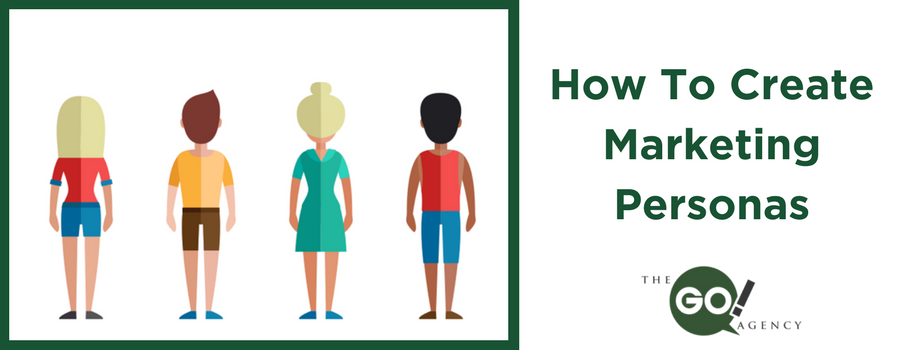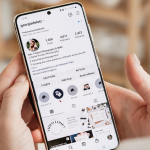What Are Marketing Personas?
Marketing personas (or buyer profiles) are fictional profiles of your customers or potential customers. These profiles list every bit of information about a customer that would be helpful to know for marketing purposes.
Unless your company is selling something very general, your customers will be a large but finite group and able to be split into different sub-groups. So while a marketing persona is a profile of one person, the reality is that it will personify a sub-group of your customers or audience.
To put it another way, there isn’t just one type of person that is buying your product. Marketing personas allow you to figure out who those different types of people are. They help you to figure out the audience for your product, which is valuable when it comes to creating marketing campaigns.
Why Are Personas Important?
We’re all different. Our philosophy, what we value, how we speak and our upbringing. At the same time, we all have our own specific life situations. How much money we make, whether we have a family or not, or what our job is. Because of those differences, we all communicate in different ways. We all experience the world in different ways.
This creates a major challenge for marketers. All marketing has to communicate messages effectively with a specific audience. But how does a marketer know how to speak with that audience?
Well, the better a marketer knows their audience, the easier it is for them to communicate with that audience. Marketing personas are important as they build up a profile of a customer, so it’s easier to know:
- How to communicate with the customer.
- When best to communicate with the customer.
- Who the customer actually is.
- Where best to communicate with a customer.
Personas also allow a marketer to identify customer needs and wants and how they might change throughout the sales funnel.
In short, the better you know your customers, the easier it is to sell to them, and personas allow you gather information about those customers and relay it in a more personal way, at the right time.
How to Create Buyer Personas
Since creating buyer personas means knowing your customers well, much of the process of creating the personas includes research. You should first research your current customers and who you think could potentially be your customers.
To do this, you can use:
- Surveys.
- Interviews.
- Analyze current audience data from your website or social media.
- Speak to your sales department about what they know about customers.
- Research via social media.
- Focus groups.
The aim of your research should be to figure out who your customers are and what influences their buying decisions.
When creating a persona, it’s good to work with a template in mind, so you know what you need to collect and what will be helpful.
As you start to think about your personas, one helpful tip is that you can use an online advertising platform to help you to pinpoint your audience. We like to use the Facebook Ads audience builder which helps to list demographics and interests but also serves to give some inspiration.
How many personas you create will be based on how many customer types you can draw from your research. However, it’s good to keep your profiles broad enough that your entire audience is split into only a few sub-groups. Around 5 personas is a good amount to aim for.
What Data Should You Collect
How you build your personas will depend on your industry as well as how much time you have to put into them. Below is a list of possible data you can collect, which will help you get an idea of your customers. The more, the better.
Name: A name for the persona. A real name is best, so they’re easier to visualize.
Job Title: Their job title. Eg. CEO, Tour Guide, Admin Assistant.
Where they work: Their industry and a description of their business.
Details about their role: What they do in their job, as a bullet-point list or paragraph.
Age: How old they are, specifically or as a range.
Gender: What gender they are.
Language: What languages they speak.
Income: How much they make per year.
Location: Where they’re located. Specifically or generally. Eg. Are they only in New York, or do they exist over an entire country?
Excluding Location: Where they don’t live.
Interests: What they like doing, what they’re interested in.
Education: What education level they have and any specific qualifications they may have.
Tech Literacy: How well they can make technology.
Favorite Websites: Which websites do they regularly visit?
Family: What immediate family they have. Are they married? Do they have children?
Values: What do they value? How does that tie into your product?
Fears: What are their immediate fears? How does that tie to your product?
Buying Motivation: What motivates them to buy products and what will motivate them to buy your products in particular.
Buying Concerns: What concerns do they have about a product before they buy it, what concerns may they have about yours.
Goals: What goals they have for themselves or their business.
How You Help With Those Goals: How you can help them to achieve those goals.
Challenges: What challenges they need to overcome to get to those goals.
How You Help Meet Those Challenges: How you can help them get past those challenges.
Marketing Message: How you will market to the persona. What message can you use that speaks directly to them, their goals and challenges?
Persona Example
Name: Jacqueline Candy (Local Small Business Owner)
Job Title: CEO / Owner
Where they work: The owner of a small local business such as restaurant, store or service.
Details about their role: They manage a small company with less than 20 employees. They handle a range of duties, hiring and firing staff, taking care of budgets, dealing with customers and supervising staff.
Age: 35-55
Gender: Female / Male
Language: English
Income: $60,000+ per year.
Location: Local area
Excluding Location: Outside local area
Interests: Entrepreneurism, business, finance.
Education: College, MBA
Tech Literacy: Low
Family: Married with teenage children
Values:
- Time, they are busy and their time is at a premium.
- Money, they want the best bang for their buck.
- Hard workers.
- Efficiency.
Fears:
- That they will waste their money.
- That their business will fail without enough customers
- That they won’t be able to afford the quality of life they currently have.
Favorite Websites: Facebook, Entrepreneur, Forbes
Buying Motivation: To increase the revenue of their business, drive more sales.
Buying Concerns: Trusting a marketing agency, whether we have the expertise.
Goals: Increase business revenue, save time so they can focus on business.
How You Help With Those Goals: Increase customer base through social media, take over marketing to save time.
Challenges: Managing time and gaining expertise to do marketing, grow their business.
How You Help Meet Those Challenges: We will take on the brunt of their marketing so they don’t have to spend their time on it, we will help increase their online engagement.
Marketing Message: Save time, lower stress, make money, beat the competition!





